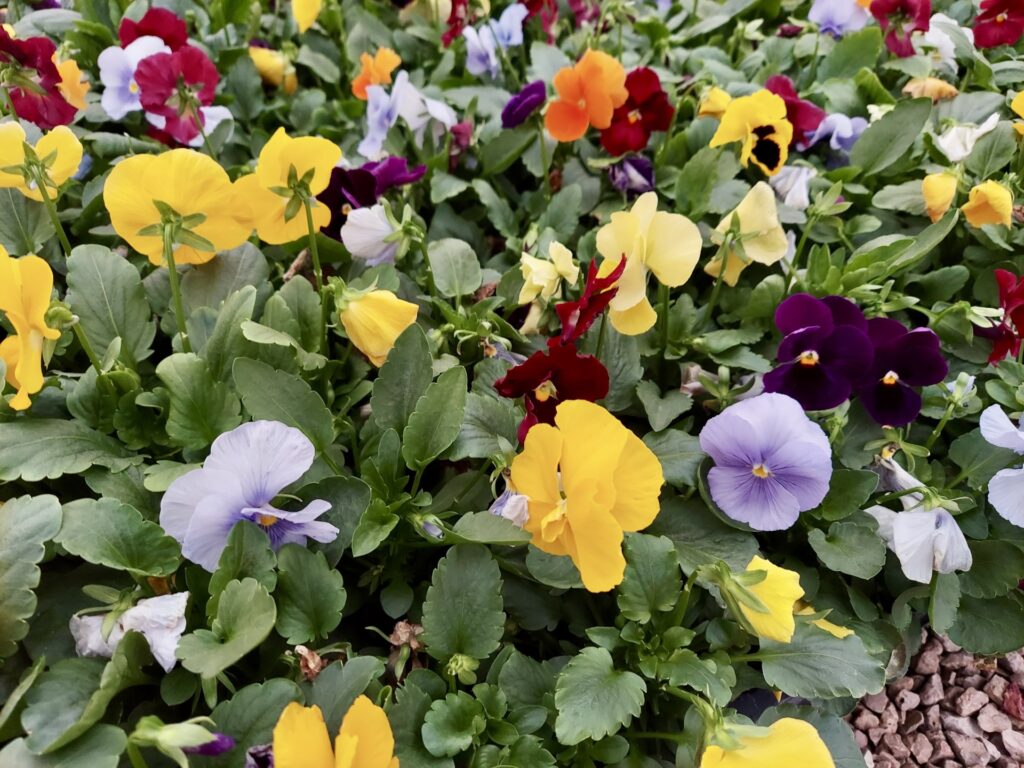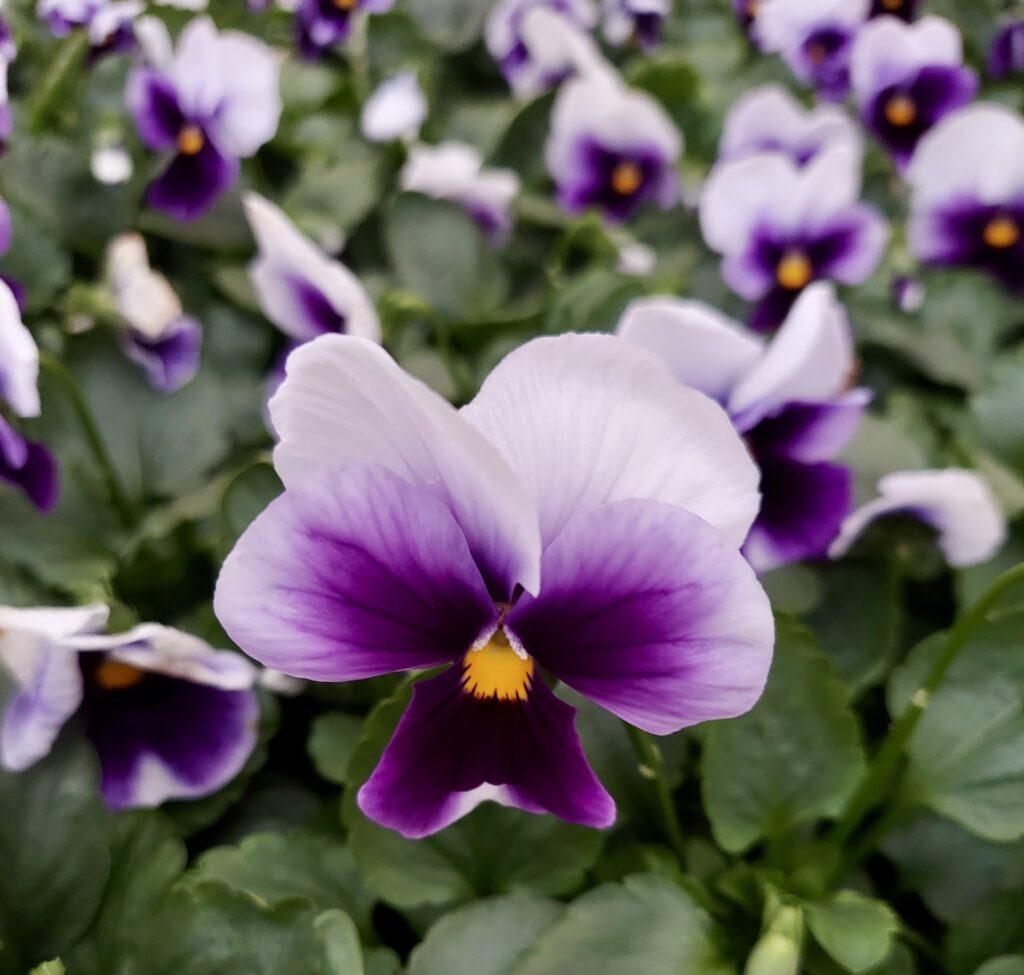Pansies named newest Texas Superstar
Plants add versatility, range of color to landscapes
The newest Texas Superstar plant – the pansy – is a versatile, tough, durable cold-hardy ornamental that provides color during an otherwise drab time of year.
Pansies are one of the most popular annual garden flowers for the landscape, said Paul Winski, Texas A&M AgriLife Extension Service horticulture program specialist in the Texas A&M Department of Horticultural Sciences.

They come in a wide range of colors, including shades of purple, blue, yellow, orange and white. The flowers typically have a dark center called the “face” or “blotch,” which contrasts with the lighter-colored petals.
Winski said there are also “clear” flowers with no markings on their petals.
“The unique color combinations and patterns that pansies provide around the house make them a popular choice for gardens and containers,” he said. “There are so many colors. They are always a great option to add a pop of color during the cool season in Texas.”
To be designated a Texas Superstar, a plant must perform well for growers throughout the state. Texas Superstars must also be easy to propagate, ensuring the plants are widely available and reasonably priced.
Some pansy series available at garden centers include Delta, Freefall, Colossus, Matrix, Cool Wave, Crown, Ultima and Majestic Giants II.
When and where to plant pansies
Pansies are cool-season plants, meaning they thrive in cooler temperatures. They are often planted in the spring or fall, as they can withstand light frosts.
Winski said pansies can be found on the market in Texas by August and that many professionals and home gardeners will add them to landscapes by October because they perform well through typical Texas winters and can bounce back from cold snaps.
“They hold up well as a cool-season ornamental and provide color at a time of the year when there isn’t much color in the landscape,” he said. “People are planting them earlier and earlier, but I think the best time to plant them is around Halloween. They’re just tough as nails and don’t need a lot of inputs or attention.”
Pansies prefer full sun to partial shade and adapt to most well-drained soil types, he said. They grow to 6-12 inches in height with a 6- to 8-inch spread. When planted in clusters, Winski said they will typically fill out when planted 12 inches apart from center to center.
Winski recommended adding some general 1:1:1 ratio fertilizer upon planting. The application will be enough to carry the plant through its life. Because they are a cool-season plant, pansies in landscapes typically thrive on moisture from rainfall. Once established, they require watering only when soils become dry.
“Pansies are one of those plants that you can plant and, once established, require minimal care,” he said. “They’re low maintenance, have very few disease issues and stay in bloom.”



Best use for pansies
Plants perform best when adding color to borders or in mass in landscape beds and containers, Winski said. Cascading or trailing varieties, like Cool Wave and Freefall, are available and great for hanging baskets or containers.
Pansy flowers are also edible. Their petals can be used to garnish drinks, salads, desserts and other dishes.
“Pansies are one of those all-around staple ornamentals for Texas landscapes when it comes to the cool season,” he said. “If you want to add color to your landscape, you can find imaginative ways to apply them because they are consistent performers. That’s why they are a Texas Superstar.”
Texas Superstar is a registered trademark owned by Texas A&M AgriLife Research. Plants are designated by the Texas Superstar executive board, which comprises nine horticulturists from AgriLife Research, AgriLife Extension and Texas Tech University in Lubbock.





